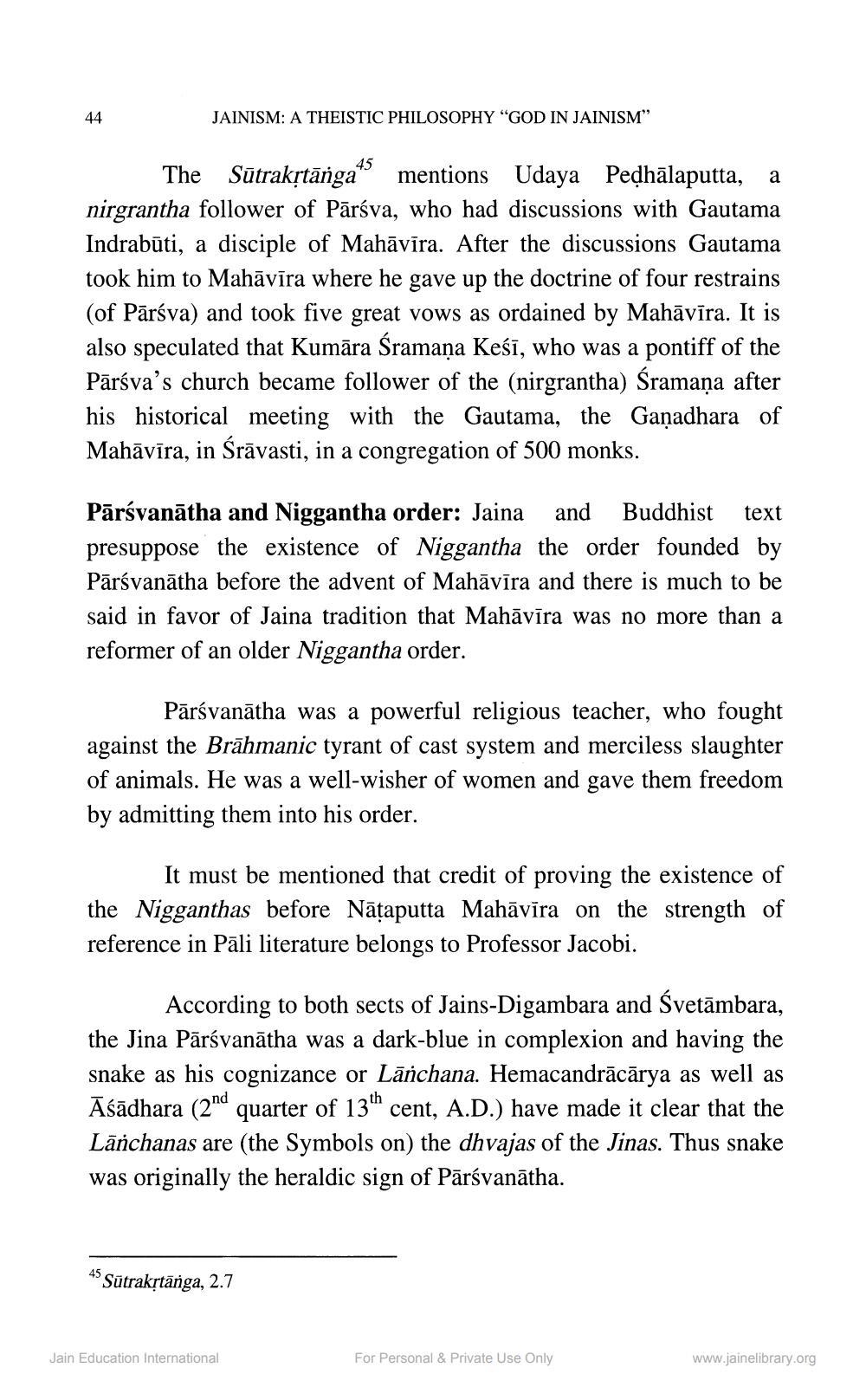________________
44
JAINISM: A THEISTIC PHILOSOPHY "GOD IN JAINISM"
15
The Sūtrakstānga"mentions Udaya Pedhālaputta, a nirgrantha follower of Pārsva, who had discussions with Gautama Indrabūti, a disciple of Mahāvīra. After the discussions Gautama took him to Mahāvīra where he gave up the doctrine of four restrains (of Pārsva) and took five great vows as ordained by Mahāvīra. It is also speculated that Kumāra Śramaņa Keśī, who was a pontiff of the Pārsva's church became follower of the (nirgrantha) Śramaņa after his historical meeting with the Gautama, the Gañadhara of Mahāvīra, in Śrāvasti, in a congregation of 500 monks.
Pārsvanātha and Niggantha order: Jaina and Buddhist text presuppose the existence of Niggantha the order founded by Pārsvanātha before the advent of Mahāvīra and there is much to be said in favor of Jaina tradition that Mahāvīra was no more than a reformer of an older Niggantha order.
Pārsvanātha was a powerful religious teacher, who fought against the Brāhmanic tyrant of cast system and merciless slaughter of animals. He was a well-wisher of women and gave them freedom by admitting them into his order.
It must be mentioned that credit of proving the existence of the Nigganthas before Nātaputta Mahāvīra on the strength of reference in Pāli literature belongs to Professor Jacobi.
According to both sects of Jains-Digambara and Svetāmbara, the Jina Pārsvanātha was a dark-blue in complexion and having the snake as his cognizance or Lārchana. Hemacandrācārya as well as Āśādhara (2nd quarter of 13th cent, A.D.) have made it clear that the Lāńchanas are (the Symbols on the dhvajas of the Jinas. Thus snake was originally the heraldic sign of Pārsvanātha.
45 Sūtrakrtānga, 2.7
Jain Education International
For Personal & Private Use Only
www.jainelibrary.org




